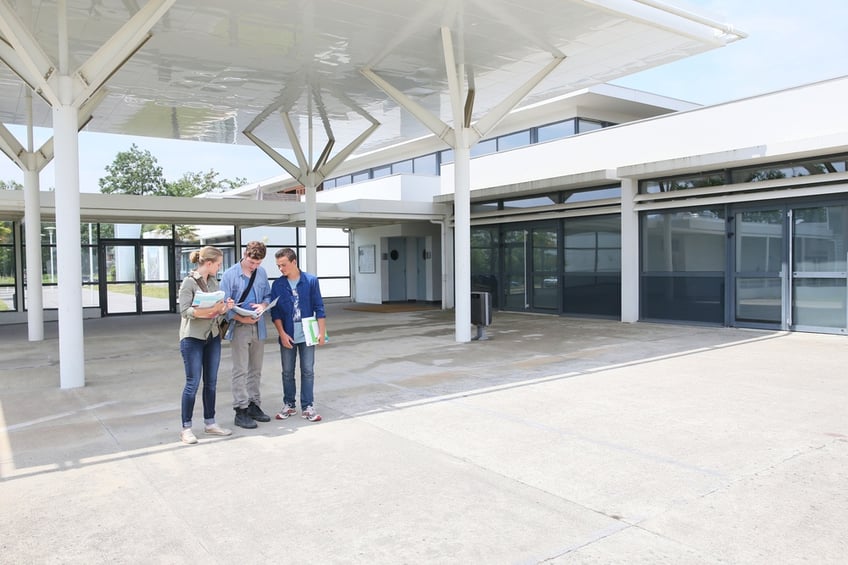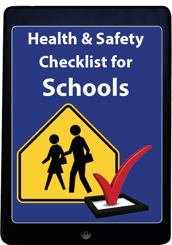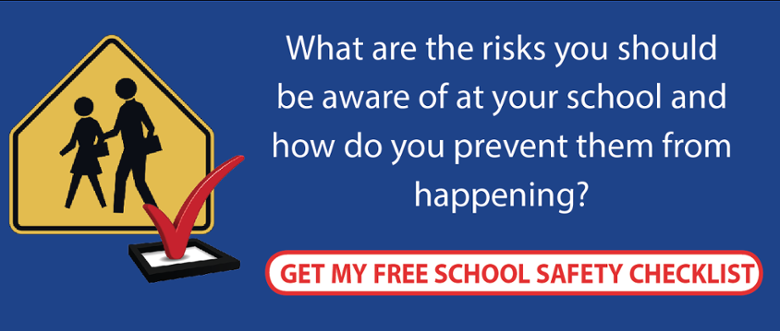
The main focus of educators and administrators is to deliver a good learning environment for students whilst they are in class. However, health and safety in schools should also be a top priority. The threats to the safety of pupils and teachers alike can be fairly diverse and often unexpected. Recent years have seen a surge in classroom violence, with both children and adults on the receiving end (the Health and Safety Executive now considers people working in education to be most at risk from workplace violence). However, accidents in schools have also seen an increase over the same period. By having a comprehensive, industry-informed checklist of potential threats to health and safety, schools can better prepare for emergencies and greatly mitigate their impact when they do occur. ANT has produced such a checklist document free of charge, so that staff can quickly and easily get to grips with the full scope of the challenges they may face and the most effective solutions available to them.
The checklist includes advice and tips on how to deal with accidents, violent students, abusive parents, intruders and general school safety. However, there are some specific physical changes that can quickly be made in order to improve the levels of health and safety in schools.
The first is to improve response times to emergencies. In general, many schools use procedures that are not optimal for getting responders to a crisis in as little time as possible. The reasons for this are many-fold, but can be reduced down to the responsible teacher either being occupied with dealing with the emergency or actually being unable to physically summon help. This means that either a general alarm is sounded (which typically triggers a fire evacuation and can add to confusion), a phone call is used to notify other staff (which can take a long time to coordinate a response) or a pupil is used as a runner (which again takes up valuable time). Instead, schools can now look to modern technology to improve their levels of protection and deal with emergencies promptly. The main way this is accomplished is by automating the response phase.
By installing a critical alarm management system, a school can massively cut down on the delays and confusion that often occurs in a crisis. This computerised upgrade package works by tying a central software suite to an app that can be installed on any smart device, allowing teachers to raise an alarm from any location and add as much detail as is necessary. Once raised, the system will take the alarm and assign it a priority before notifying response staff via their own copy of the app. This all takes place in seconds and is obviously much more effective than verbally relaying information in person or via a telephone tree. Furthermore, if the notification of an emergency is not acknowledged within an agreed time period, the system will automatically escalate the alarm to senior staff members so they can make sure action is taken.

CLICK HERE TO DOWNLOAD THE HEALTH & SAFETY CHECKLIST FOR SCHOOLS >
The checklist includes:
- How to deal with accidents
- Dealing with violent students
- Safety from intruders
- Safety from parents
- General school safety
All communications related to an alarm can be routed through the app, saving them for later study so that staff can gain a full picture of a given event if necessary. This also allows administrators and teachers to work together to analyse data after incidents happen so that processes can be altered via an evidence-based approach in order to improve school safety. However, the critical alarm management system is not just useful in moments of crisis, but is also intended to be used for less urgent problems such as building maintenance or the scheduling of training. This allows staff members to see what progress is being made on an issue in real time via their app in order to stay up to date. It also means that safety hazards can be flagged and dealt with in an efficient manner, without being forgotten, meaning that threats like loose masonry, exposed wiring or leaks can be repaired before they grow into a serious problem.
However, in some situations it may be impossible for a teacher to use their app in order to report an emergency, possibly due to having to evacuate a classroom or because they are faced with a potentially violent situation. For circumstances such as these, smaller single-function devices can be carried by teachers on their person throughout the day and when activated will raise a high priority alarm and bring any available staff to their location. These mobile personal emergency response devices (MPERS) can be issued to staff working in high-risk environments, such as with potentially violent pupils or in areas where an accident is more likely to happen such as in a science lab. These devices can also be installed in fixed locations in a classroom, hidden from view of the students but in a place where a teacher can readily access them.
Maintenance staff can also benefit from the use of MPERS, as they are especially at risk of suffering an accident whilst at work. However, also available are numerous smart devices which can fulfill the same function automatically. Acting with all the functionality of a regular smart device, these gadgets are upgraded to be highly damage resistant and have sensors that can detect a fall, lack of movement or if an employee enters a high-risk area. If one of these events should occur, the device will first try to seek confirmation from the employee themselves that they are unhurt and if no response is forthcoming it will then raise a high priority alarm.
ANT is a leading manufacturer of all of the above systems and equipment, drawing on years of industry experience to deliver robust and cost-effective solutions. Modern technology can go a long way towards helping improve health and safety in schools if applied properly. ANT’s solutions are deliberately designed to be simple and intuitive bolt-on upgrades to existing systems already in place, meaning that teachers and support staff won’t have to go through extensive retraining in order to enjoy their benefits. By seamlessly merging with existing processes, these products allow staff to worry less about the safety of themselves and their students and instead focus on education.




